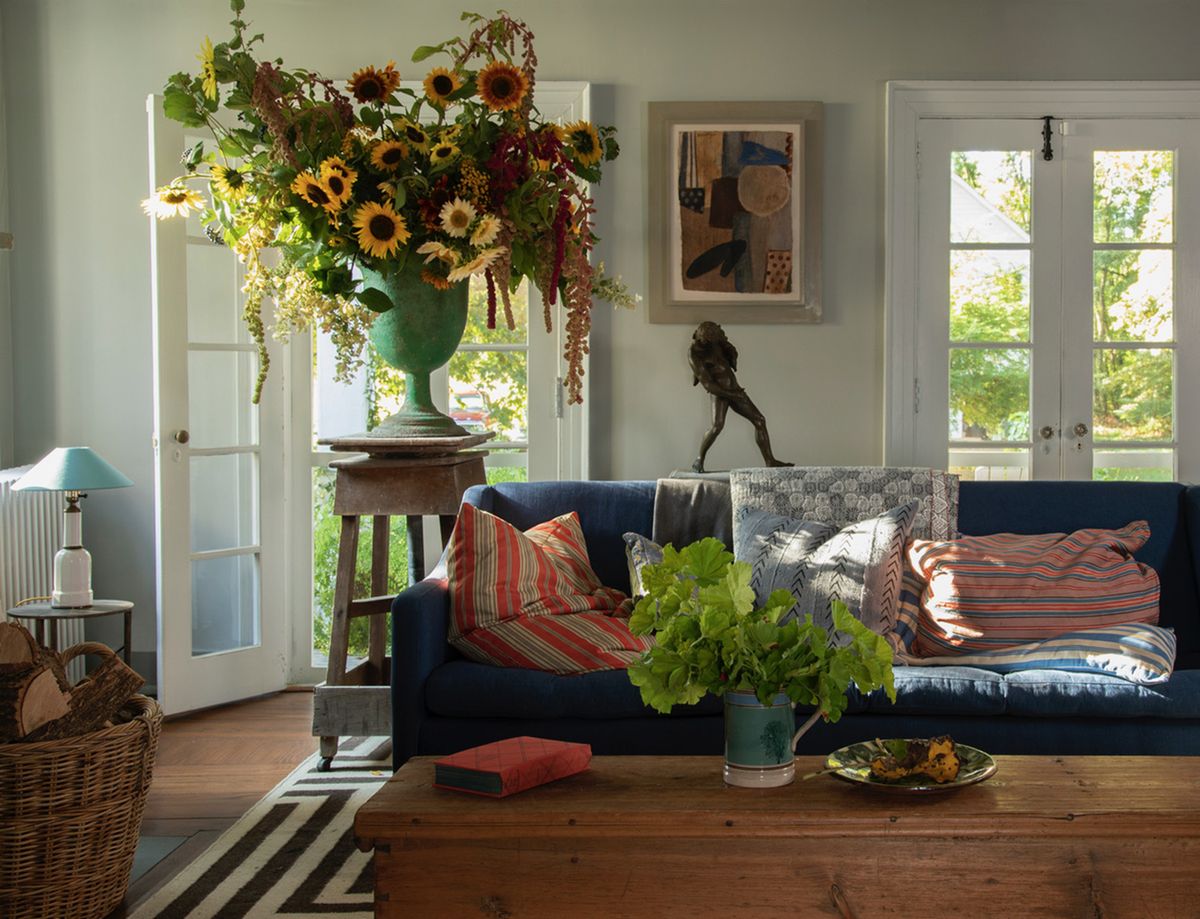
The Art of Decorating with Flowers — 10 Ideas for Elevating Your Home with Blooms
Any prop stylist or photo director worth their salt will tell you that no interior is complete or photo-ready without some kind of fresh floral arrangement dressing the space. Flowers bring life to any interior by their very nature: living, breathing organisms, palpably emanating energy.
Fresh flowers ignite more than visual sensibilities for those inhabiting a room or just passing through. Their colors, textures and scents can be transformative, which is why designers and stylists spend so much time thinking about, sourcing, and arranging florals.
“Flowers are living things; they are shape shifters and harbingers of joy,” says floral and event designer Lewis Miller who, for his famous flash flower installations, was dubbed the “Banksy of floral design” by the New Yorker magazine. “They literally breathe life into a room.”
But how can the everyday design enthusiast impart some of the wisdom of experts like Lewis Miller when thinking about decorating with florals? We all may have our own personal favorites, but there are some tried and true tricks of the trade that will help you navigate the nursery next time you’re picking up a fresh bouquet.
1. Seek Simplicity
Single stem blooms have an architectural, structural quality to them.
(Image credit: Funny How Flowers Do That)
Lewis’s stunning flash flower installations in unexpected places like New York City trash cans might lead you to believe he’s into maximalism, and you wouldn’t be wrong. In the home though, he’s all about simple luxury.
“For the home, I love single stem arrangements,” Lewis says. “I think there is such beauty and impact in a heap of single-stem blooms. Some of his favorites are anemones, Japanese ranunculus, and sweet peas.
Architectural designer Nora Gharib of Gharib Studio, agrees. “A single stem in a sculptural vase can create a sense of understated luxury,” she says.
2. Elevate the Greens
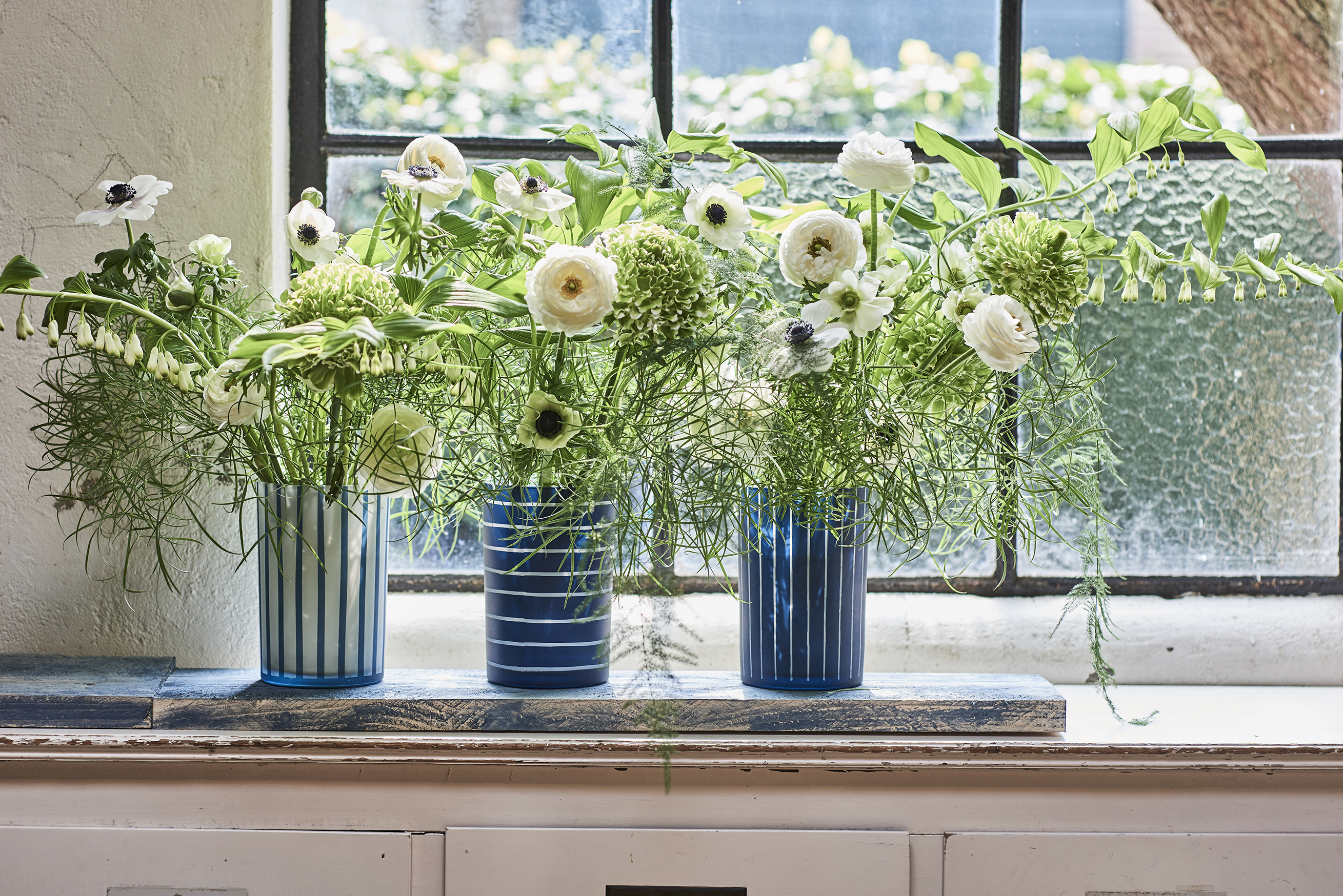
Anemone coronaria is an accent flower in these otherwise green bouquets.
(Image credit: Funny How Flowers Do That)
The brightly colored, perfectly shaped petals of a tulip or the fluffy tuft of a peony likely come to mind when we think about adding florals. But the green elements in floral arrangements can be just as lovely, and in some cases, can comprise the entire bouquet. Tall branches or cascading greenery can be especially dramatic for larger spaces and may not contain any flowers at all.
For designer Marianne Tiegen, decorating with florals is as much about the greenery as it is about the blooms themselves. She recommends different kinds of greens for the four seasons: “Tender greens in the spring, mature greens in the summer, autumnal colored leaves in the fall, and Christmas themed [leaves] for winter, mixed with sage greens.”
3. Respect the Seasons
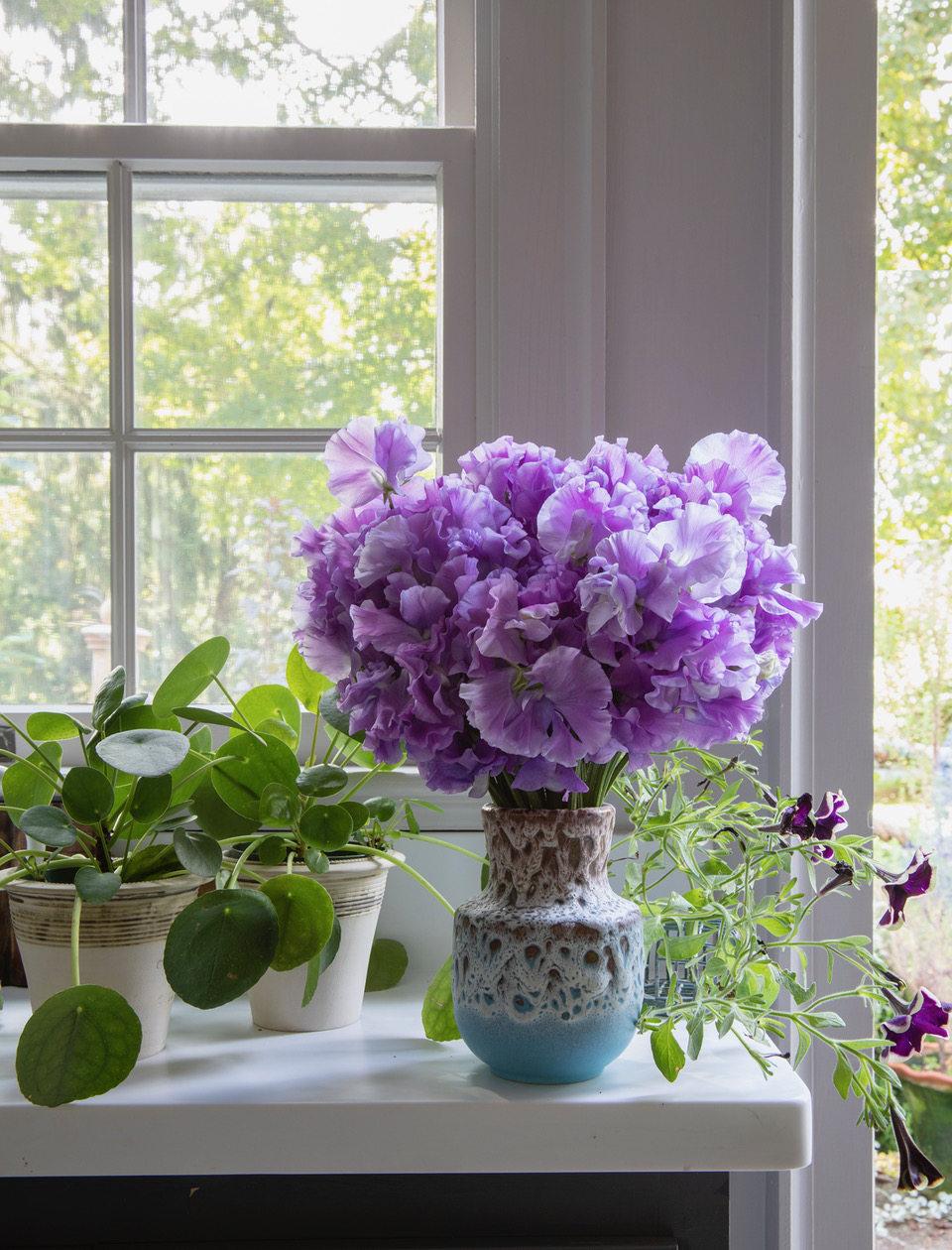
Matching the seasons might be easiest in spring, but there are options all year long.
(Image credit: Don Friedman)
And just because it’s the most obvious doesn’t make the point any less salient: nowhere are seasons better reflected in interiors than through the floral arrangements you choose to adorn your home.
Even the mention of winter or Christmas flower arrangements conjures images of poinsettias and red roses. If you do nothing else but switch up your floral arrangements for the season, you will have spent your design energy wisely.
Looking for a prescriptive seasonal shopping list and a quick arrangement guide? Pin Miami-based designer, Nora Gharib’s list below:
Spring: Cherry blossoms in a tall, clear vase for a fresh, airy feel
Summer: Wildflowers or hydrangeas in soft pastel tones.
Fall: Deep-toned dahlias or rust-colored chrysanthemums for warmth
Winter: Evergreen branches, amaryllis, or white lilies for a crisp, structured look
4. Make Flower Shopping Part of Your Weekly Routine
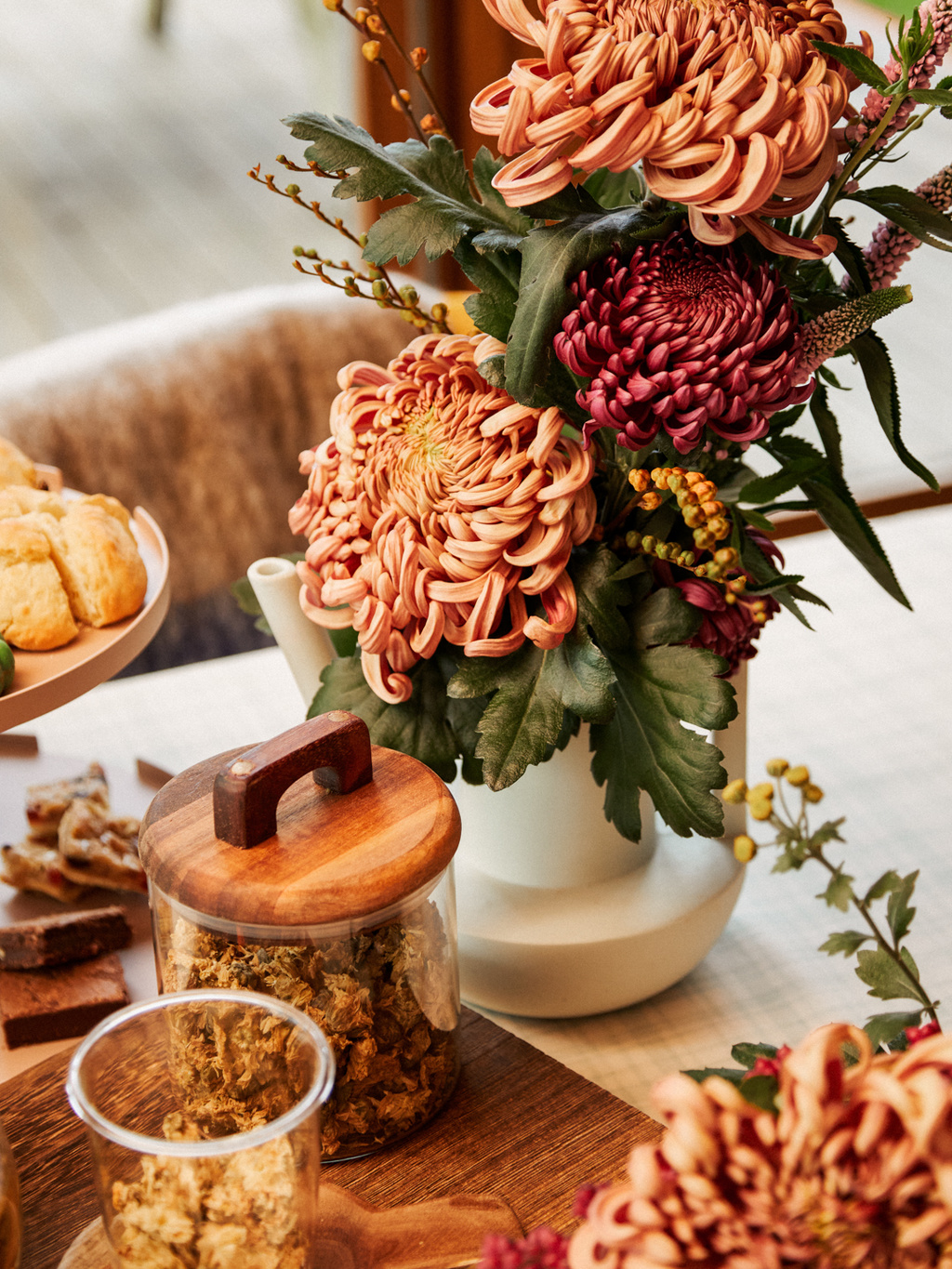
Even grocery store flowers can last a long time, so use your weekly shop to pick some up.
(Image credit: Funny How Flowers Do That)
Choosing flowers doesn’t have to be an overwhelming process. It’s easiest if and when worked into your normal routine, the same way vacuuming or laundry might be (and arguably, it’s a lot more fun than those). In fact, when you’re making your weekly grocery list, put “flowers” at the top or bottom.
Not only will it remind you to peruse the store for fresh cut blooms, it may even inspire you to take a detour to a local nursery — likely a welcome diversion.
5. Match the Bloom to the Room
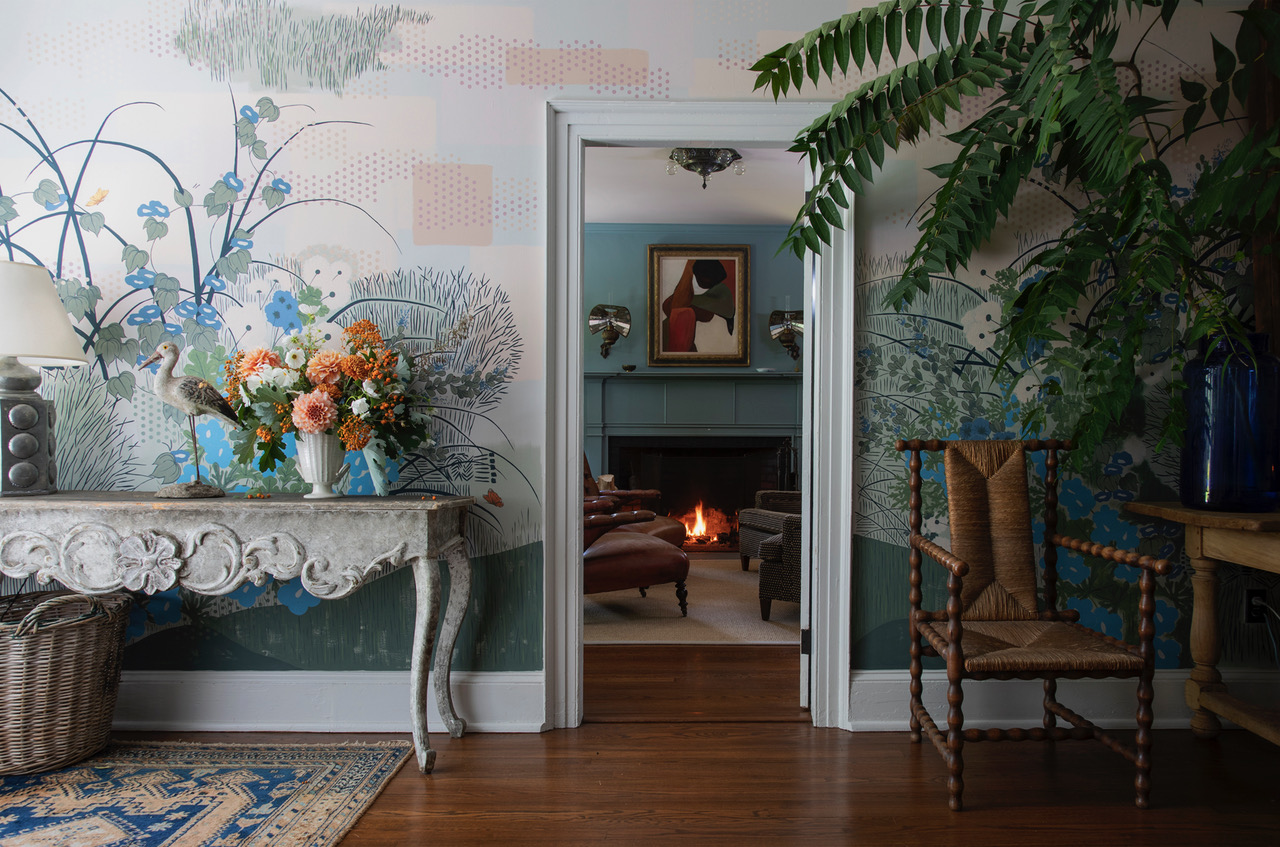
Pick the right flower to suit the vibe of your room.
(Image credit: Don Friedman)
Each room in the house inherently evokes an emotion thanks to that space’s function. When choosing florals, consider how they will complement those feelings.
“Think about incorporating something invigorating and energizing in your kitchen, living room, and home office,” says interior designer Kaleigh Kelley, of K. Kelley Design based in Connecticut. “These are the spaces where you want to bring energy and creativity whether it’s for entertaining, cooking, or productivity in your work space.”
For the dining room, try something more unexpected and bold, while florals in bedrooms and bathrooms should inspire calm. Gharib suggests placing eucalyptus in matte ceramic vases, or small clusters of jasmine or lily in bud vases for the bedroom.
6. Get Away From Glass
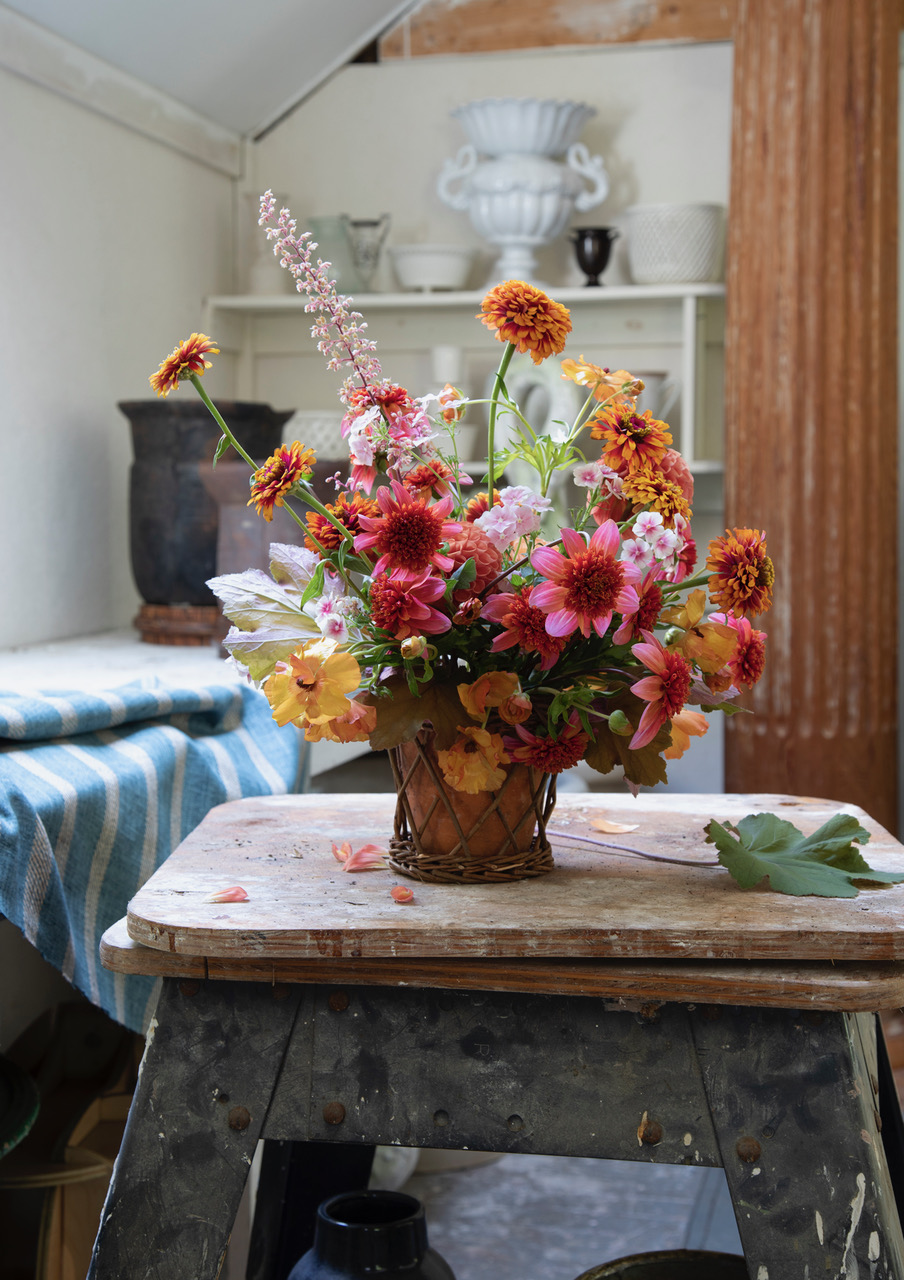
Glass vases can sap the creativity from your floral display.
(Image credit: Don Friedman)
Anyone who has ever decorated with flowers owns at least one clear glass vase. While an old standby, the glass vase may have had its day. Many designers today encourage moving away from clear glass in favor of more playful vessels.
“I am a firm believer in a container with character,” says Lewis Miller. “Almost all the vessels I use when creating a floral arrangement are ceramic, opaque, and full of personality. A successful flower arrangement is about the relationship between the flowers and their container, and their surrounding environment.”
Kaleigh recommends collecting vases of all shapes and sizes at flea markets, antique shops, or yard sales, while Marianne Tiegen suggests Murano glass vases, particularly for summer.
7. Give Your Blooms a Second Life
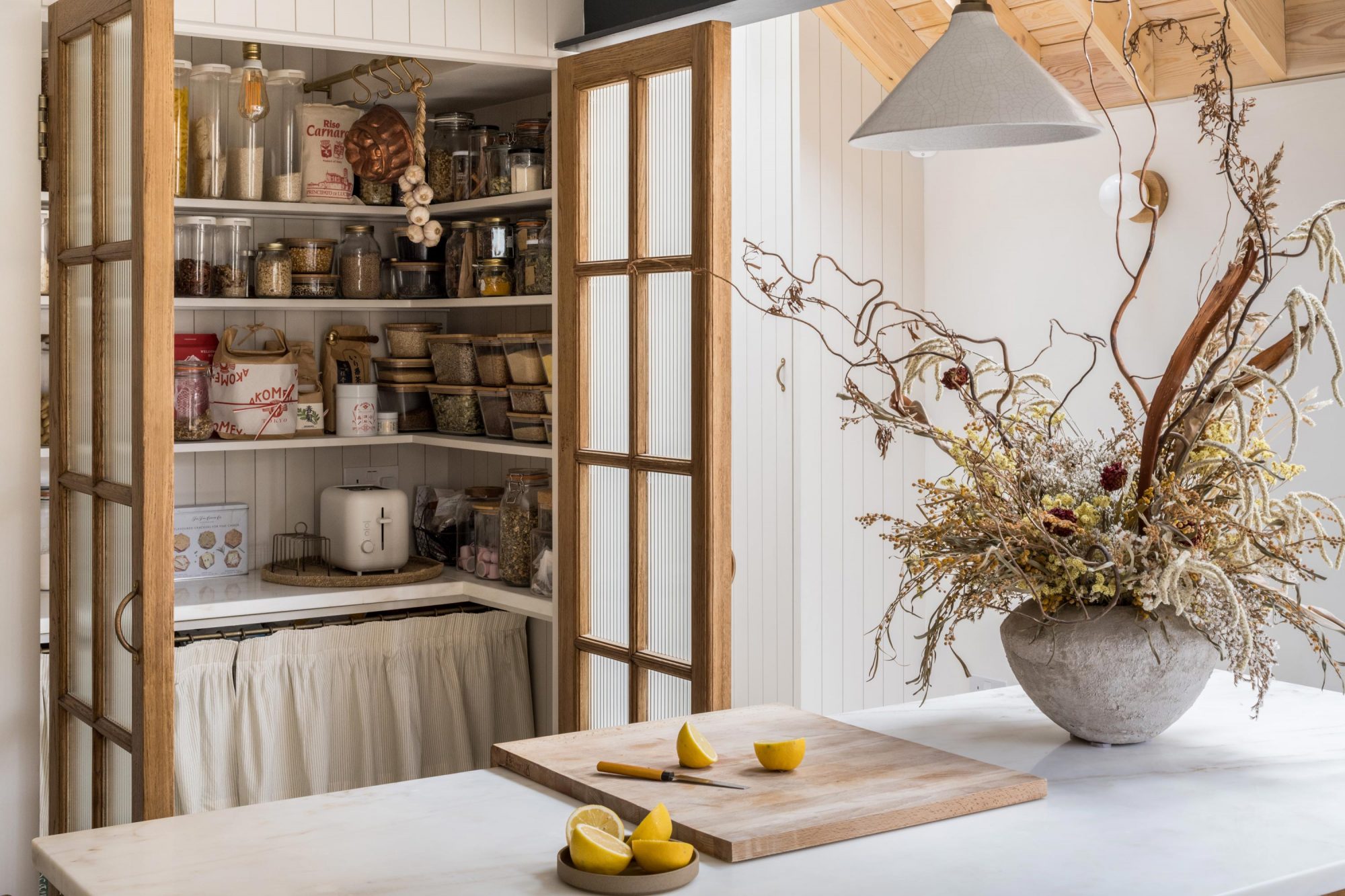
Allowing fresh flowers to dry out properly can mean they have extra longevity in your home.
(Image credit: French + Tye. Design: Bradley Van Der Straeten)
Flowers can add an unexpected touch to an otherwise traditional space. If you’re generally risk-averse when it comes to design, experimenting with florals can be a great, non-committal way to go a little wild.
In fact, when you’re selecting fresh flowers, think about their potential for “two lives,” as you can incorporate them into your longer-term decor strategy.
“Framing dried florals from special moments in your life is a great way to preserve a moment in time and it’s a lovely, low cost, unexpected decor item,” says Kaleigh Kelly.
Nora Gharib recommends decorating with dried flowers such as muted pampas grass, bunny tails or preserved roses for low-maintenance style, dried arrangements.
8. Surprise Your Guests
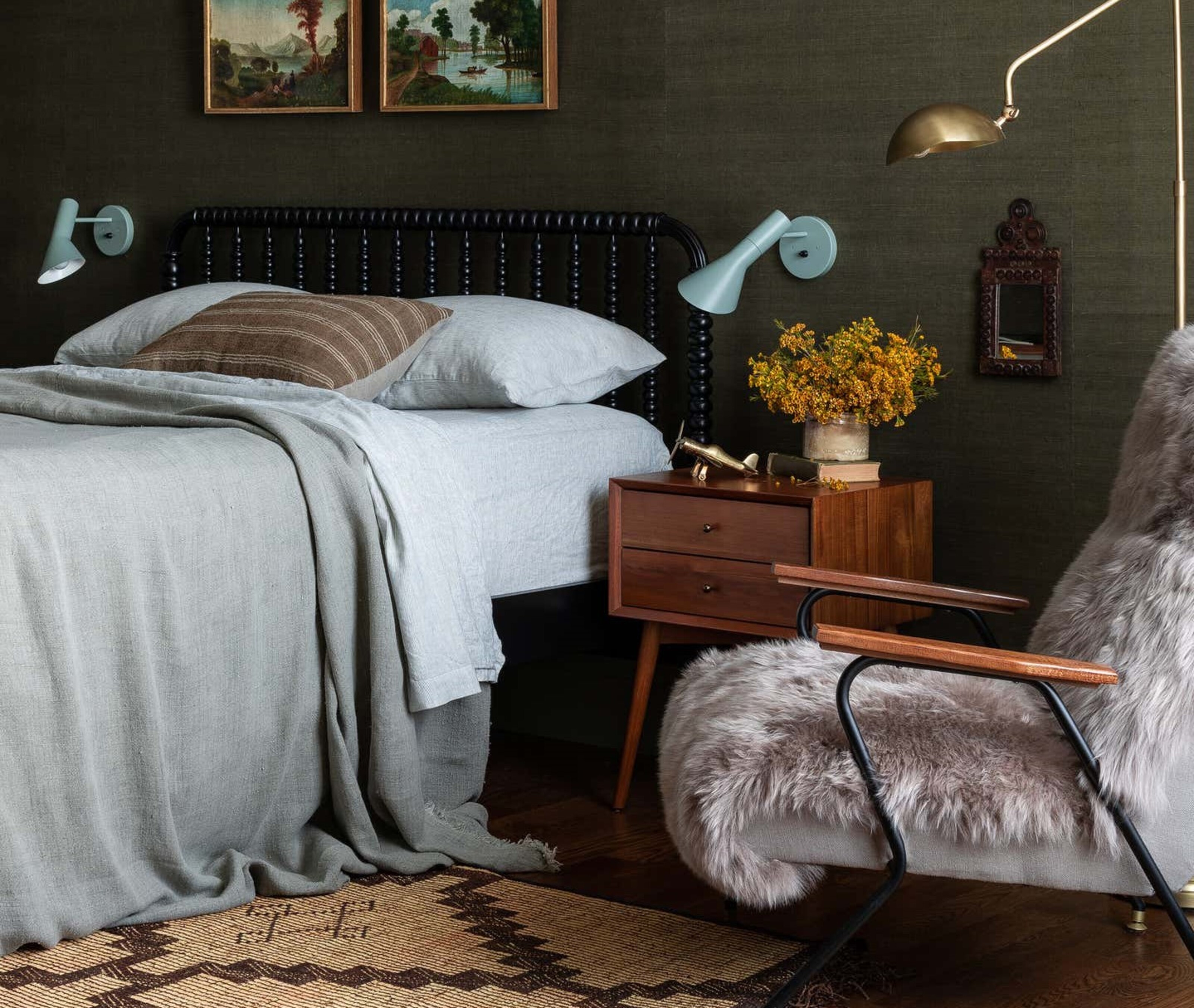
A bunch of flowers on a nightstand is always going to be a welcome surprise for a guest.
(Image credit: Haris Kenjar. Design: Heidi Caillier)
Expecting company? The simple addition of florals can transform your guest room space and elevate their stay.
“Don’t be afraid to have flowers arranged in places one wouldn’t expect,” says interior decorator Kevin Lowe. “A small bouquet of fresh cut flowers in a mint julep cup for the bedside table in a guest bedroom when company is coming is a great way to elevate a space and make your guests feel extra special.”
9. Let Your Nose Be Your Guide
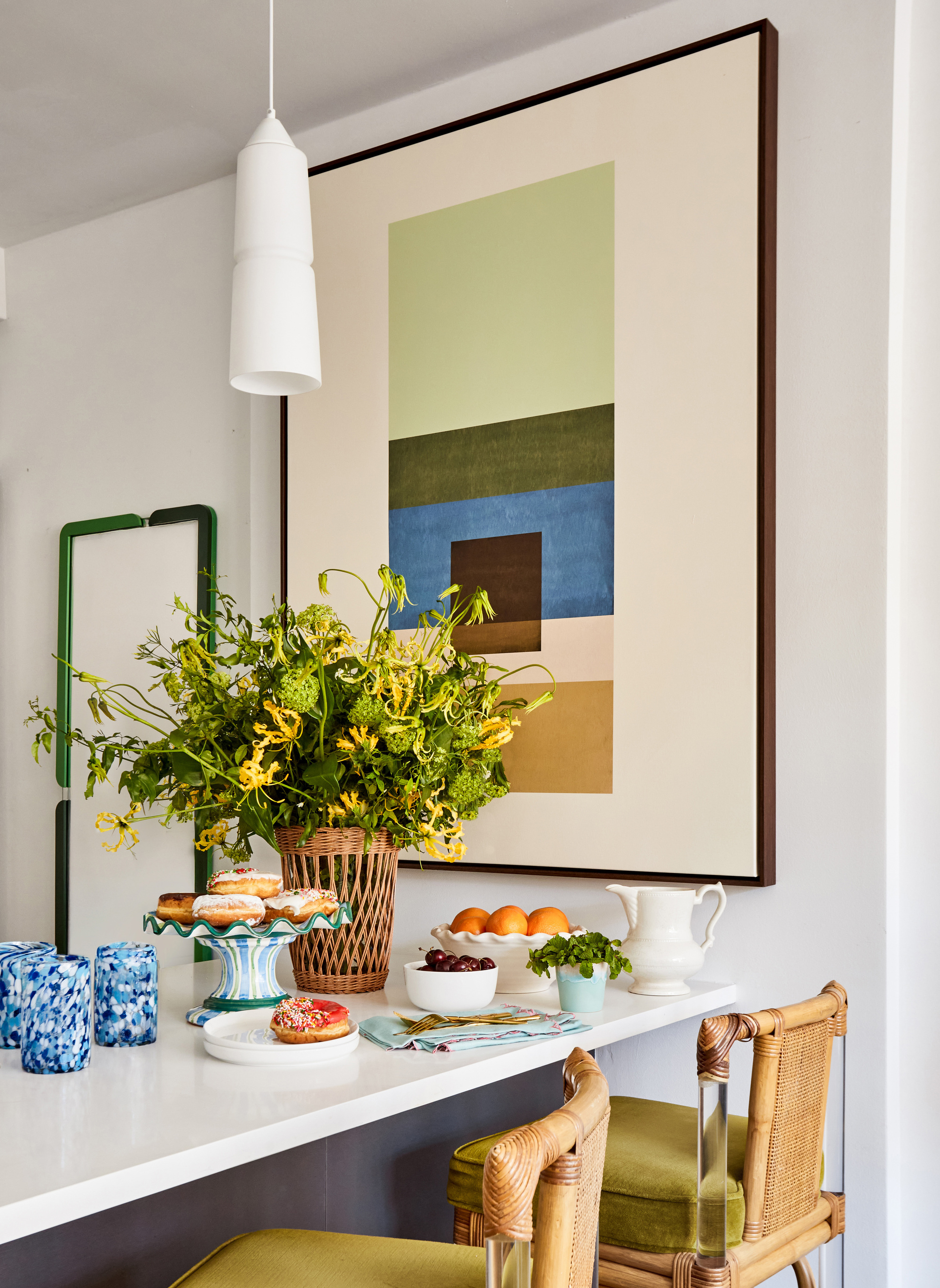
Consider scents when decorating a room in your home with flowers.
(Image credit: Image: Rikki Snyder. Interior design: Hollis Loudon. Styling: Kimberly Power)
Scent is at once subjective and highly polarizing. Lilies, for instance, are unanimously loved for their beauty, but oft hated for their scent. Miller contends that when it comes to scent, a candle is a better bet, while blooms are there for visual impact.
If you know a certain bloom is going to make you nauseous as soon as you enter the room, don’t pick it, no matter how gorgeous it looked in that recent Livingetc article you bookmarked.
10. Complement Your Personal Style
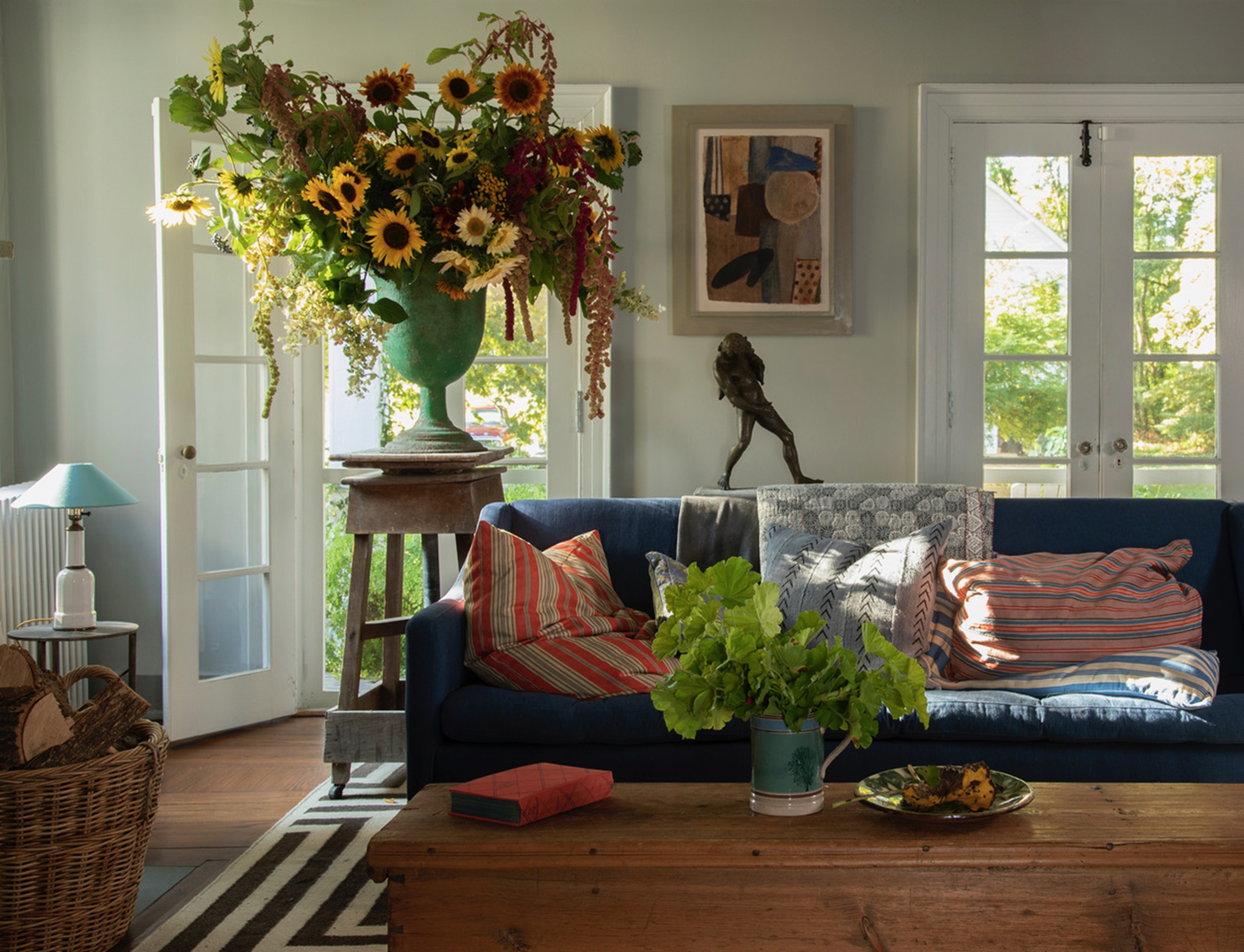
(Image credit: Don Friedman. Design: Lewis Miller)
Think about flowers as an extension of your own personal style. Both Kelly and Lowe contend that you should prioritize decorating with blooms that make you happy, regardless of their color, style, or seasonality.
If you’re a modern minimalist, you may tend toward orchids, tulips, or calla lilies in sculptural vases. If your design sensibility can be summed up as “more is more,” you’ll likely gravitate toward bold peonies, poppies, or delphinium in oversized, free-flowing arrangements.
However you lean in your interior style, don’t let floral arrangements deter you from what you love. Fresh flowers can change a space’s vibe, but they can also bring it to life in ways you hadn’t expected but would absolutely welcome.










